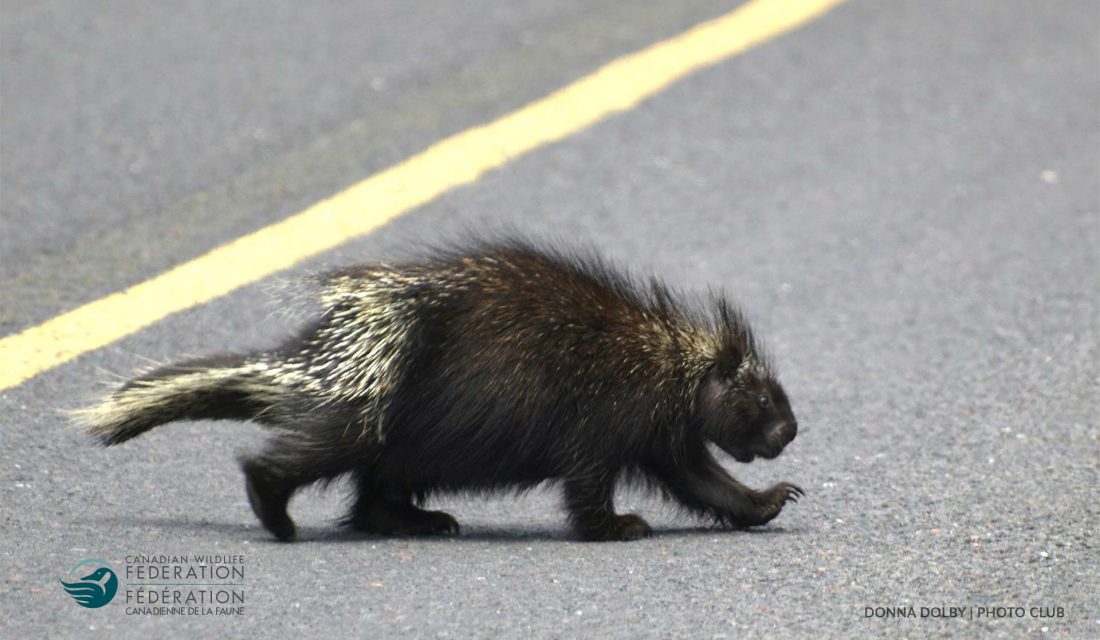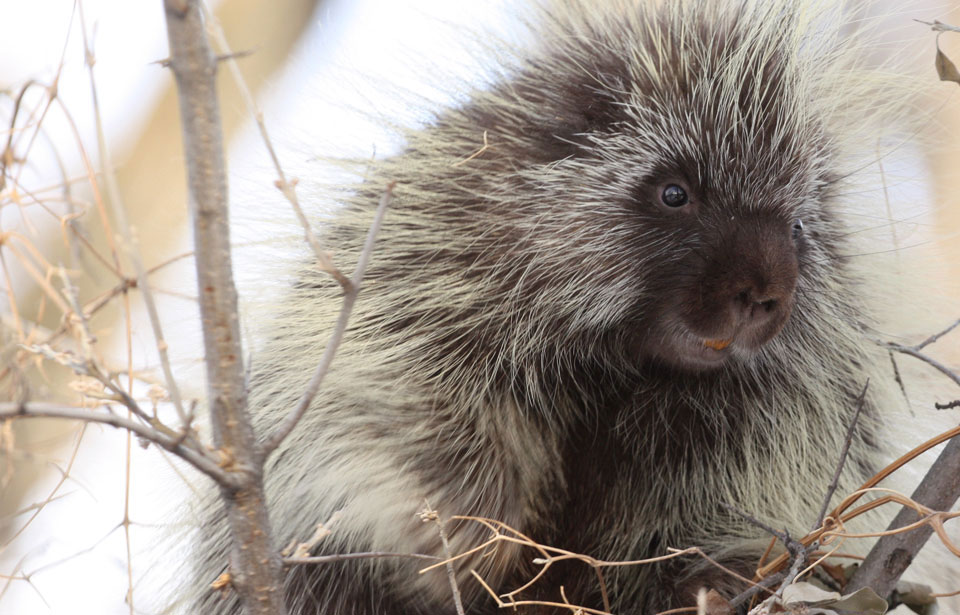A few barbed comments about the amazing porcupine and what we might learn from studying its quills
Surely, when the choice of our national animal was made, the beaver just edged out the porcupine. Yes, the fur trade was built on beavers, and yes, they are a huge environmental asset, and yes, neither can be said of porcupines. But the porcupine has one of the most technologically advanced defence systems in the natural world, and that should have counted for something.

Porcupines are the world’s third largest rodent, after the beaver and the capybara. There are species scattered around the world, but the several sub-species in North America are unique because they have barbed quills. Thirty thousand of them. You’d think the barbs would make them very hard to pull out — and you’d be right: as you tug on a quill to remove it from you (or your dog!), the barbs, which are usually flat against the shaft of the quill, open up and spread out horizontally into the flesh, a little like opening an umbrella. The harder you pull, the more they spread out, in effect making the quill thicker and wider than the puncture hole it made in the first place.
Although the impact of a muzzle-full of quills is the point, the quills don’t stop there. Once embedded in the skin or muscle of an attacker, they continue to penetrate and have been found in just about any organ of any porcupine predator: stomach wall, liver, lungs and kidneys. Such quills sound like the perfect defence mechanism, but it’s the details that fascinate.
For one thing, how does the porcupine disengage from an enemy it has just plastered with quills if the barbs’ structure makes quills difficult to extract? After all, the quills are attached to the porcupine too. It’s a serious issue, because if enough quills are embedded in an enemy, the force required to pull away from them may exceed the weight of the porcupine. But evolution, having undoubtedly sacrificed many porcupines in the course of working this out, has the solution. When the animal smacks its target, the initial impact actually drives the quills back deeper into the porcupine, breaking the links in which the quill is seated. Then separation is easy.
A PORCUPINE QUILL PENETRATES HUMAN
SKIN BETTER THAN A HYPODERMIC NEEDLE
AND IT WILL CAUSE LESS TISSUE DAMAGE…
AT LEAST UNTIL YOU TRY TO PULL IT OUT
What’s more surprising is that the barbs on the quill also make it easier to penetrate the flesh of an animal. This seems odd, because as the quill enters, the barbs should be squeezed against the shaft of the quill. It isn’t obvious why that should aid penetration, but the experimental data are unambiguous. A team led by Jeffrey Karp at Harvard Medical School and the Massachusetts Institute of Technology compared the performance of porcupine quills with hypodermic needles, quills with the barbs sanded off, quills from the African porcupine (whose quills have no barbs) and even artificial quills fashioned from polyurethane. Careful measurements of the penetration force needed for all these showed conclusively that barbed quills penetrate most easily, even better than a standard 18-gauge hypodermic needle. Related to that ease is the fact that the barbed quills cause less tissue damage on entering.
The secret seems to be how the stress of entering flesh is distributed. The team argues that because stress is concentrated around the barbs, the necessity of ripping open an entire circle of flesh is unnecessary, just like a serrated knife edge cuts more easily than a smooth edge. The results are obvious in photomicrographs of cut surfaces: barbed quills cut much more smoothly with less tearing of flesh.

Karp’s team have biomimicry on their minds: they’re working on an improved hypodermic needle that would have the ease of penetration of the barbed quill (without the difficulty of withdrawing it). They’re also thinking of a “biomimetic patch,” something to remain in place over tissues as they heal. In this case, both attributes of barbed quills would be important, especially the resistance to detachment.
At the same time, there are biological questions, like why does the North American porcupine have barbed quills while its African cousin doesn’t? The main predators of the African porcupine are formidable enough, including lions, hyenas and large birds of prey. Is there something different or more intense about the predatory pressure on our local porkies that would encourage barbed quills? In fact, although they seem like they should be more effective than barbless quills, there are several efficient porcupine killers in North America, especially the fisher. Barbed quills are a sophisticated deterrent, but not quite perfect.
 Reprinted from Canadian Wildlife magazine. Get more information or subscribe now! Now on newsstands! Or, get your digital edition today!
Reprinted from Canadian Wildlife magazine. Get more information or subscribe now! Now on newsstands! Or, get your digital edition today!




